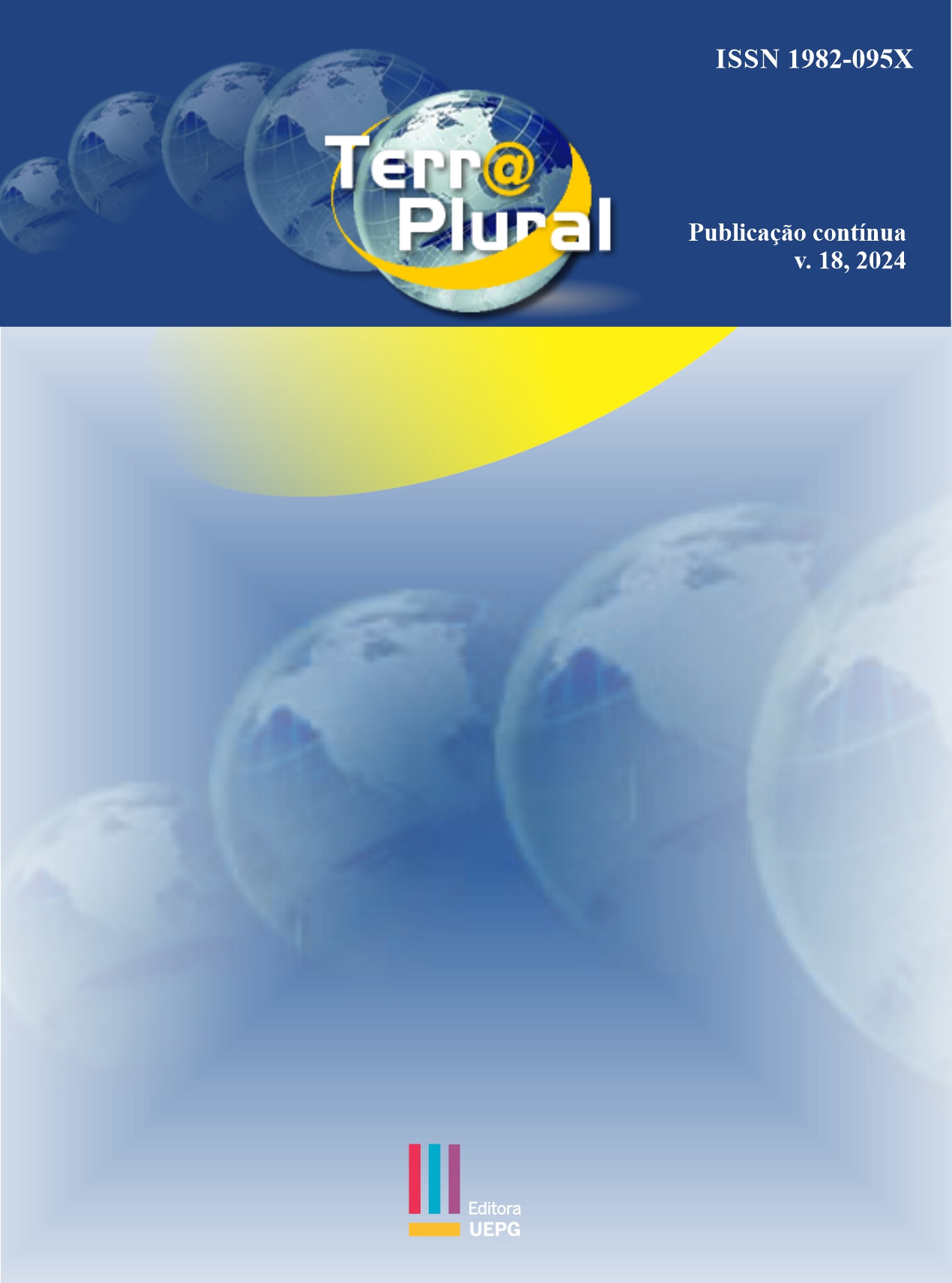Malacacheta indigenous land
occupation of space and use of water resources
DOI:
https://doi.org/10.5212/TerraPlural.v.18.2422693.013Keywords:
indigenous lands, geographic space, river basins, RoraimaAbstract
Population growth on indigenous lands leads to a reorganization of the space. In the case of the Malacacheta Indigenous Land, located in the Serra da Lua ethnoregion, in the municipality of Cantá, state of Roraima/Brazil, the population growth in the Malacacheta and Jacaminzinho communities has led to the creation of new neighborhoods, occupying alternative spaces. One of the consequences is the increasing of the use of water, with both negative quantity and quality repercussions. Given this reality, the study sought to understand how the space occupied by residents has expanded and its relationship with the watershed of the Cavalo stream, a tributary of the Quitauaú river. Using secondary data, observation and interviews, it was possible to see that, with the emergence of these new neighborhoods, the tendency is to occupy the space around the springs, with garbage and fires affecting water resources, with consequences for future generations. As there is no awareness among residents of the importance of water resources, both in terms of quantity and quality, the situation of degradation remains and tends to increase.
Downloads
Downloads
Published
How to Cite
Issue
Section
License
Copyright (c) 2024 Erison da Silva Cadete, Maria Bárbara Magalhães Bethonico

This work is licensed under a Creative Commons Attribution-NonCommercial-NoDerivatives 4.0 International License.
Revista Terr@ Plural will obtain the auctorial rights for all published texts. This also implies that the text can be published anywhere in the world, including all rights on renewal, expansion, and dissemination of the contribution, as well as other subsidiary rights. The authors get permission to publish the contribution in other media, printed or digital, it may be in Portuguese or translation since the publication is credited to Revista Terr@ Plural. It allows the self-archiving of published articles in institutional repositories, thematic repositories, or personal web pages in the pdf version downloaded from the journal's site.















